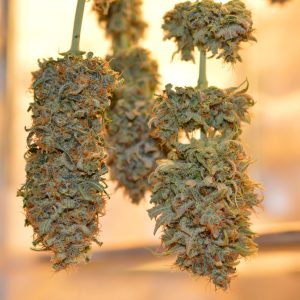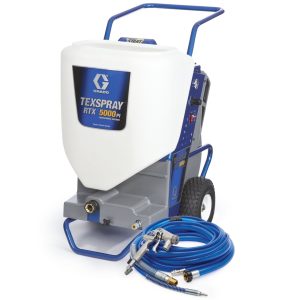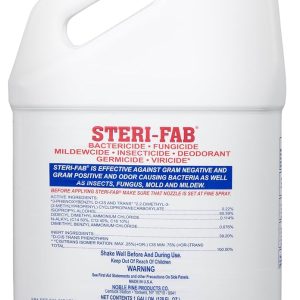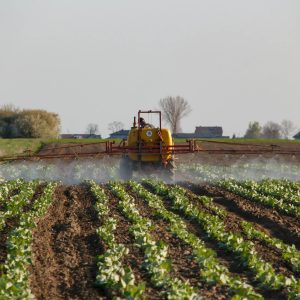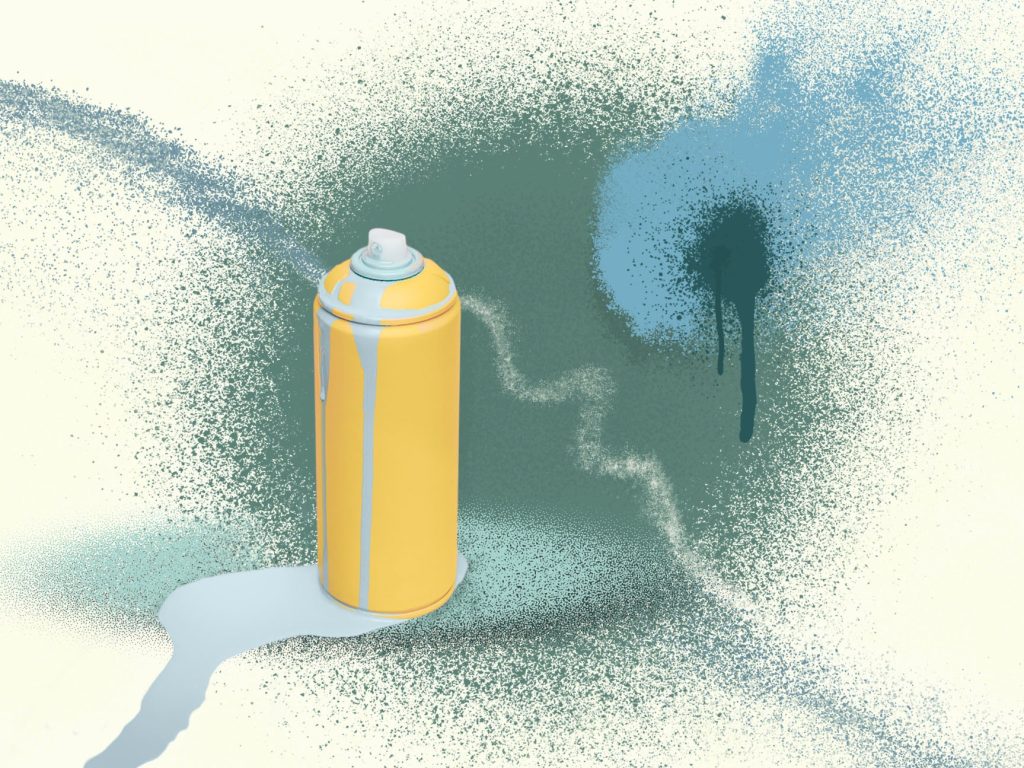
Spray painting transforms ordinary objects into stunning works of art, but achieving professional-quality results requires more than just picking up a can and spraying. Whether you’re refreshing furniture, creating automotive masterpieces, or tackling home improvement projects, mastering the right spray paint tips can mean the difference between a smooth, even finish and a disappointing mess of drips and uneven coverage.
The art of spray painting combines technical knowledge with practical skill, demanding attention to detail in every aspect from surface preparation to final coating application. Professional painters understand that successful spray painting isn’t just about the paint itself—it’s about creating the perfect environment, selecting appropriate materials, and executing precise techniques that ensure consistent, durable results.
Modern spray painting has evolved significantly from its industrial origins, now offering homeowners and DIY enthusiasts access to professional-grade tools and materials. With the right approach and understanding of fundamental principles, anyone can achieve results that rival those of experienced professionals. The key lies in understanding the science behind spray application, the importance of proper preparation, and the techniques that separate amateur attempts from professional finishes.
Understanding Different Types of Spray Paint Systems
Aerosol Spray Cans: The Beginner’s Choice
Aerosol spray cans represent the most accessible entry point into spray painting, offering convenience and simplicity for small to medium-sized projects. These pre-pressurized containers contain paint mixed with propellants that create the spray pattern when the nozzle is activated. Spray paint tips for aerosol cans focus heavily on technique since you cannot adjust pressure or spray pattern like with professional equipment.
The chemistry behind aerosol spray paint involves carefully balanced formulations that maintain consistent viscosity and spray characteristics throughout the can’s life. Manufacturers engineer these products to work effectively at room temperature, though performance can vary significantly with temperature changes. Cold temperatures can reduce pressure and affect spray patterns, while excessive heat can cause over-pressurization and safety concerns.
Quality aerosol paints typically contain higher concentrations of pigments and resins compared to brush-on alternatives, ensuring better coverage and durability. Premium brands often incorporate advanced nozzle technology that provides more consistent spray patterns and reduces clogging issues. Understanding these differences helps in selecting the right product for your specific project requirements.
HVLP (High Volume Low Pressure) Systems
HVLP systems represent the professional standard for spray painting, offering superior control, efficiency, and finish quality compared to conventional spray guns. These systems operate at lower pressures, typically between 2-10 PSI at the cap, which significantly reduces overspray and material waste while improving transfer efficiency to over 65%.
The technology behind HVLP systems focuses on delivering high volumes of air at low pressure, creating a gentle spray pattern that reduces bounce-back and allows for better coating adhesion. This approach minimizes environmental impact by reducing volatile organic compound (VOC) emissions and paint waste, making HVLP systems increasingly popular in both professional and residential applications.
Advanced spray paint tips for HVLP systems include understanding the relationship between air pressure, fluid pressure, and fan pattern adjustment. Proper setup requires balancing these three variables to achieve optimal atomization for your specific paint type and project requirements. Many professionals recommend starting with manufacturer-recommended settings and making incremental adjustments based on test spray results.
Airless Spray Systems
Airless spray systems excel in high-production environments and large-scale projects, using hydraulic pressure to atomize paint without compressed air. These systems can handle thicker coatings and achieve faster coverage rates, making them ideal for exterior house painting, industrial applications, and large furniture projects.
The fundamental principle behind airless spraying involves forcing paint through a small orifice at extremely high pressure, typically 1500-3000 PSI. This process breaks the paint into fine droplets through hydraulic pressure alone, eliminating the need for compressed air mixing. The result is higher material transfer efficiency and the ability to spray heavier-bodied coatings that would clog conventional spray guns.
Understanding tip selection becomes crucial with airless systems, as different tip sizes and angles dramatically affect spray pattern, coverage rate, and finish quality. Professional spray paint tips emphasize matching tip selection to both paint viscosity and desired finish characteristics, with larger tips handling thicker materials and wider spray patterns covering larger areas more efficiently.
Surface Preparation Fundamentals
Cleaning and Degreasing Techniques
Proper surface preparation forms the foundation of any successful spray paint project, with cleaning and degreasing representing the critical first step in ensuring optimal paint adhesion. Contaminants such as oils, waxes, fingerprints, and environmental pollutants can create invisible barriers that prevent paint from forming strong molecular bonds with the substrate.
Essential spray paint tips for cleaning emphasize using appropriate solvents and cleaning agents specific to the contaminant type and substrate material. For metal surfaces, degreasing agents like acetone or specialized metal cleaners remove machining oils and handling residues. Plastic surfaces often require careful cleaning with mild detergents to avoid surface damage, while wood surfaces may need gentle cleaning to preserve grain texture.
The cleaning process should progress from general cleaning to specific contamination removal, followed by a final wipe-down with tack cloths or lint-free rags. Professional painters often use a two-solvent cleaning method, first removing heavy contamination with appropriate cleaners, then following with a final cleaning using slower-evaporating solvents that ensure complete contamination removal.
Sanding and Surface Roughening
Mechanical surface preparation through sanding creates the microscopic texture necessary for optimal paint adhesion while removing surface imperfections that would telegraph through the final finish. The science behind proper sanding involves creating uniform scratch patterns that maximize surface area while maintaining substrate integrity.
Different substrates require specific sanding approaches and grit sequences. Professional spray paint tips recommend starting with coarser grits to remove major imperfections and gradually progressing to finer grits that create the ideal surface texture for paint adhesion. Metal surfaces typically require 220-320 grit final sanding, while plastic surfaces often need 400-600 grit to avoid scratching.
The sanding process generates microscopic debris that must be completely removed before paint application. Professional techniques include using compressed air to blow out crevices, followed by tack cloth wiping to remove fine particles. Some professionals use static-eliminating tack cloths specifically designed to remove dust particles that might be held by static electricity.
| Surface Type | Initial Grit | Final Grit | Special Considerations |
|---|---|---|---|
| Bare Metal | 180-220 | 320-400 | Remove rust, use metal prep |
| Previously Painted | 220-320 | 400-600 | Check for lead paint |
| Plastic/Fiberglass | 320-400 | 600-800 | Light touch, avoid heat |
| Wood | 180-220 | 220-320 | Sand with grain direction |
Priming Strategies
Primer selection and application represent critical steps that directly impact final finish quality, durability, and appearance. Modern primer technology offers specialized formulations designed for specific substrate types and environmental conditions, with each primer type providing unique benefits for different applications.
Advanced spray paint tips for priming emphasize matching primer chemistry to both substrate and topcoat materials. Epoxy primers excel on metal surfaces, providing excellent corrosion resistance and adhesion. Urethane primers offer superior build thickness and sandability for high-quality finishes. Specialty plastic primers contain adhesion promoters that chemically bond to difficult-to-paint plastic surfaces.
Application technique for primer differs from topcoat application, typically requiring slightly thicker wet film builds to ensure complete coverage and proper substrate sealing. Professional painters often apply primer in multiple thin coats rather than single heavy coats, allowing each layer to cure properly before additional application. This approach minimizes solvent entrapment and reduces the risk of primer-related finish defects.
Environmental Factors and Workspace Setup
Temperature and Humidity Control
Environmental conditions dramatically affect spray paint application and curing characteristics, with temperature and humidity representing the most critical variables in achieving professional results. Paint manufacturers formulate their products to perform optimally within specific temperature and humidity ranges, typically 65-75°F with relative humidity below 50%.
Temperature affects multiple aspects of spray painting, including paint viscosity, solvent evaporation rates, and curing chemistry. Critical spray paint tips emphasize understanding how temperature variations impact these factors. Cold temperatures increase paint viscosity, requiring pressure adjustments or paint thinning to maintain proper atomization. Hot temperatures accelerate solvent evaporation, potentially causing dry spray or orange peel texture.
Humidity control becomes particularly important when using water-based paints or working in coastal environments. High humidity can cause slow curing, poor adhesion, and moisture-related defects such as blushing or poor gloss development. Professional spray booths incorporate dehumidification systems to maintain optimal conditions regardless of external weather conditions.
Professional painters monitor environmental conditions using digital hygrometers and infrared thermometers, adjusting application techniques and timing based on real-time readings. Some advanced systems include environmental monitoring that automatically adjusts spray parameters based on temperature and humidity readings.
Ventilation and Air Quality
Proper ventilation serves multiple purposes in spray painting operations, including contamination control, overspray capture, and maintenance of optimal air quality for both health and finish quality. Professional spray booths use engineered airflow patterns that capture overspray while maintaining consistent air movement across the work surface.
Professional spray paint tips for ventilation emphasize understanding airflow principles and contamination control. Cross-draft ventilation can cause finish defects by depositing airborne particles on wet paint surfaces. Proper booth design creates laminar airflow that moves contaminated air away from the work surface without creating turbulence that might redistribute particles.
Air filtration systems in professional operations typically use multiple filtration stages, including pre-filters for large particles, intermediate filters for fine dust, and final filters for submicron particle removal. Some systems incorporate activated carbon filters specifically designed to remove organic vapors that might cause solvent-related finish defects.
DIY painters can achieve significant improvements in air quality and finish results by creating controlled ventilation using box fans and furnace filters. Effective spray paint tips for home workshops include positioning exhaust fans to pull contaminated air away from the work area while providing filtered makeup air to maintain consistent airflow patterns.
Equipment Selection and Setup
Spray Gun Selection Criteria
Choosing the appropriate spray gun represents a critical decision that affects every aspect of the painting process, from material transfer efficiency to final finish quality. Modern spray gun technology offers numerous options, each designed for specific applications, materials, and skill levels.
Professional spray paint tips for gun selection emphasize matching gun capabilities to project requirements. Gravity-feed guns excel for small to medium projects, offering excellent material control and easy cleaning. Siphon-feed guns handle larger volumes efficiently but require higher air pressure for proper operation. Pressure-feed systems support continuous operation for production environments.
Spray gun anatomy includes several critical components that affect performance: the air cap controls spray pattern shape and atomization quality, the fluid nozzle determines flow rate, and the trigger mechanism affects application control. Professional-grade guns offer precision manufacturing tolerances that ensure consistent performance and longer service life compared to economy alternatives.
Understanding spray gun specifications helps in making informed selections. Fan pattern width affects coverage efficiency, with wider patterns covering larger areas but potentially sacrificing edge definition. Atomization quality depends on air cap design, with some configurations optimized for fine finishes while others prioritize production speed.
Air Compressor Requirements
Air compressor selection directly impacts spray gun performance, with insufficient air supply leading to poor atomization, uneven coverage, and frustrating spray patterns. Essential spray paint tips include understanding the relationship between compressor specifications and spray gun air consumption requirements.
Compressor specifications include several key metrics: CFM (cubic feet per minute) rating indicates air volume capability, PSI (pounds per square inch) rating shows maximum pressure capability, and tank size affects duty cycle and pressure stability. Professional applications typically require compressors that can deliver 125% of the spray gun’s maximum air consumption at working pressure.
Tank size considerations extend beyond simple air storage, affecting pressure stability and moisture management. Larger tanks provide more consistent pressure during extended spray sessions and allow more time for moisture condensation and separation. Advanced spray paint tips recommend installing moisture separators and air dryers in the air supply line to prevent water contamination that can cause finish defects.
Compressor maintenance directly affects spray quality, with regular oil changes, filter replacements, and moisture draining essential for consistent performance. Professional painters often use dedicated spray compressors equipped with oil-free pumps and advanced filtration systems to eliminate any possibility of oil contamination reaching the spray gun.
Pressure Regulation and Controls
Precise pressure control enables consistent spray patterns and optimal material atomization, with proper regulation systems providing the stability necessary for professional results. Critical spray paint tips emphasize understanding the difference between tank pressure and regulated working pressure, as these can vary significantly during operation.
Primary pressure regulation occurs at the compressor tank, setting the maximum system pressure and controlling compressor cycling. Secondary regulation at the spray gun or air supply line provides fine-tuned control for specific applications, allowing pressure adjustments without affecting overall system operation.
Advanced pressure control systems incorporate multiple regulation stages, including main tank regulation, point-of-use regulation, and sometimes individual gun regulation for multi-gun operations. Some professional systems include electronic pressure monitoring and automatic adjustment to maintain consistent pressure regardless of air consumption variations.
Professional spray paint tips for pressure setup recommend establishing baseline pressures using manufacturer specifications, then fine-tuning based on actual spray pattern results. Starting pressures typically range from 15-25 PSI for HVLP systems, with adjustments made based on material viscosity, ambient conditions, and desired finish characteristics.
Paint Selection and Preparation
Understanding Paint Chemistry
Modern paint formulations represent complex chemical systems designed to provide specific performance characteristics, with understanding basic paint chemistry essential for selecting appropriate products and achieving optimal results. Fundamental spray paint tips include recognizing how different paint chemistries affect application characteristics, curing mechanisms, and final performance.
Solvent-based paints rely on organic solvents for viscosity control and application characteristics, offering excellent flow and leveling properties that minimize brush marks and spray patterns. These formulations typically provide superior adhesion to challenging substrates and better resistance to environmental conditions, making them preferred for demanding applications.
Water-based paints use water as the primary solvent, offering environmental benefits through reduced VOC emissions while providing excellent durability and color retention. Modern water-based formulations incorporate sophisticated additives that improve flow characteristics and application properties, often matching or exceeding the performance of traditional solvent-based alternatives.
Specialty paint chemistries include epoxies for chemical resistance, polyurethanes for durability, and acrylics for color retention. Each chemistry type offers specific advantages and limitations, with selection depending on substrate compatibility, environmental exposure, and performance requirements. Advanced spray paint tips emphasize testing compatibility between primers, paints, and clear coats to prevent chemical incompatibility issues.
Viscosity Adjustment Techniques
Paint viscosity directly affects atomization quality, spray pattern characteristics, and final finish appearance, with proper viscosity adjustment representing a critical skill for achieving professional results. Viscosity measurement typically uses Ford cups or Zahn cups, providing standardized methods for consistent viscosity determination.
Professional spray paint tips for viscosity adjustment emphasize understanding the relationship between thinning ratios and spray characteristics. Over-thinning can cause poor coverage, color variation, and durability issues, while insufficient thinning leads to poor atomization and texture problems. Most manufacturers provide specific thinning recommendations based on application method and environmental conditions.
Thinner selection affects more than just viscosity, with different solvents providing varying evaporation rates and flow characteristics. Fast-evaporating thinners work well in high humidity or cool conditions, while slow-evaporating thinners provide better flow in hot, dry conditions. Some professional painters blend multiple thinners to achieve optimal evaporation rates for specific conditions.
Temperature compensation becomes important when working in varying environmental conditions, as paint viscosity changes significantly with temperature variations. Advanced spray paint tips include warming cold paint to room temperature before viscosity adjustment and using temperature-specific thinning ratios recommended by paint manufacturers.
Color Matching and Mixing
Accurate color matching requires understanding color theory, light source effects, and the impact of substrate color on final appearance. Professional color matching often involves spectrophotometer analysis to ensure precise color reproduction, particularly important for repair work or multi-stage projects.
Essential spray paint tips for color work emphasize the importance of color testing under actual use conditions, as colors can appear significantly different under various lighting conditions. Metamerism, the phenomenon where colors match under one light source but differ under another, can cause significant problems if not properly evaluated during the color selection process.
Mixing techniques for custom colors require precise measurement and thorough blending to ensure color consistency throughout the project. Professional painters use digital scales for accurate colorant measurement and mechanical mixers to ensure complete color integration. Hand mixing often results in color variations that become apparent only after application.
Documentation of custom color formulations enables future touch-ups and repairs, with professional painters maintaining detailed records of mixing ratios, substrate preparation, and application conditions. Professional spray paint tips include creating color samples on the actual substrate material to verify color accuracy before beginning full-scale application.
Application Techniques and Patterns
Spray Pattern Fundamentals
Mastering spray pattern control forms the foundation of professional spray painting technique, with proper pattern overlap and gun movement critical for achieving uniform coverage and professional-quality finishes. Essential spray paint tips emphasize understanding how gun distance, movement speed, and trigger control affect spray pattern characteristics.
Optimal spray distance typically ranges from 6-10 inches for most applications, with closer distances providing heavier coverage but increased risk of runs and sags, while greater distances can cause dry spray and poor adhesion. Professional painters maintain consistent gun distance through practice and sometimes use mechanical guides for critical applications.
Overlap technique requires maintaining 50% pattern overlap for uniform coverage, with each pass covering half of the previous spray pattern. This technique ensures consistent mil thickness and eliminates streaking or color variations that can occur with inadequate overlap. Professional spray paint tips recommend practicing overlap technique on test panels before beginning actual projects.
Gun movement speed affects both coverage uniformity and material usage efficiency, with consistent speed essential for professional results. Too slow movement causes excessive material buildup and potential runs, while too fast movement results in insufficient coverage and poor hiding. Most professional applications require movement speeds of 6-12 inches per second, adjusted based on pattern width and desired coverage.
Multi-Coat Application Strategies
Professional spray painting typically involves multiple coat application, with each coat serving specific purposes in building the final finish system. Base coats provide adhesion and substrate sealing, color coats develop the desired appearance, and clear coats provide protection and gloss characteristics.
Advanced spray paint tips for multi-coat systems emphasize proper flash time between coats, allowing sufficient solvent evaporation without complete curing. Insufficient flash time can cause solvent entrapment and poor adhesion between coats, while excessive delay may require surface preparation before additional coats can be applied.
Coat thickness control becomes critical in multi-coat systems, as excessive thickness can cause adhesion problems, slow curing, and finish defects. Professional painters use wet film thickness gauges to monitor application thickness and ensure consistent results across the entire project.
Cross-coating technique involves applying subsequent coats at 90-degree angles to previous coats, ensuring complete coverage and minimizing the appearance of spray patterns. This technique proves particularly important when using metallic or pearl finishes where spray pattern variations can cause significant appearance differences.
Edge and Detail Work
Sharp edges and detailed areas require modified spray techniques to achieve professional results while maintaining consistent appearance with flat surfaces. Critical spray paint tips for edge work include reducing spray pressure and using partial trigger control to prevent excessive material buildup on sharp edges.
Masking techniques protect adjacent surfaces while enabling precise edge definition, with proper masking tape selection and application critical for clean results. Professional painters use specialized tapes designed for spray applications, applying them firmly to prevent paint bleeding while removing them at the proper time to avoid paint film damage.
Detail brushwork sometimes becomes necessary for areas inaccessible to spray application, requiring careful brush selection and technique to match spray finish characteristics. Professional spray paint tips recommend using high-quality brushes and thinning brush-applied paint to match the flow characteristics of sprayed material.
Corner and recessed area coverage requires gun positioning adjustments and sometimes multiple spray angles to ensure complete coverage. Professional painters often use smaller spray guns or detail guns for intricate work, providing better control and accessibility in confined spaces.
Troubleshooting Common Issues
Orange Peel and Texture Problems
Orange peel texture represents one of the most common spray painting defects, characterized by an uneven surface texture resembling the skin of an orange. This problem typically results from improper atomization, incorrect spray distance, or environmental conditions that cause rapid solvent evaporation.
Professional spray paint tips for preventing orange peel include optimizing spray gun settings for proper atomization, maintaining appropriate spray distance, and adjusting material viscosity for environmental conditions. High-quality spray guns with proper air cap selection significantly reduce orange peel tendencies compared to economy equipment.
Temperature and humidity control plays a crucial role in texture development, with hot, dry conditions promoting rapid solvent evaporation that can cause orange peel formation. Professional painters often adjust thinner selection and application timing based on environmental conditions, using slower-evaporating solvents in challenging conditions.
Surface preparation can contribute to texture problems, particularly when inadequate sanding creates surface irregularities that telegraph through the paint film. Advanced spray paint tips emphasize proper surface preparation and primer application to create the smooth foundation necessary for high-quality finishes.
Runs, Sags, and Drips
Excessive material application causes runs, sags, and drips that significantly detract from finish quality and often require extensive repair work. These defects typically result from incorrect gun settings, improper technique, or environmental conditions that slow solvent evaporation.
Prevention strategies focus on proper material viscosity, gun distance, and movement speed control. Essential spray paint tips include maintaining consistent gun distance and movement speed while avoiding excessive material application in any single pass. Multiple thin coats provide better results than fewer heavy coats.
Environmental factors contributing to flow defects include high humidity, cold temperatures, and poor ventilation that slow solvent evaporation. Professional painters monitor environmental conditions and adjust application techniques accordingly, sometimes using faster-evaporating thinners or adjusting spray booth conditions.
Repair techniques for runs and sags depend on the severity of the defect and paint system used. Minor defects sometimes can be sanded and recoated, while severe problems may require complete refinishing. Professional spray paint tips emphasize catching and correcting problems early in the process rather than attempting repairs after full curing.
Adhesion and Durability Issues
Poor paint adhesion manifests through peeling, flaking, or poor scratch resistance, often becoming apparent only after the paint system has cured completely. Adhesion problems typically result from inadequate surface preparation, contamination, or incompatible material systems.
Critical spray paint tips for ensuring proper adhesion include thorough surface cleaning, appropriate primer selection, and compatibility testing between system components. Professional painters often perform adhesion testing using standardized methods to verify system performance before full-scale application.
Environmental exposure testing helps predict long-term durability performance, particularly important for exterior applications or industrial environments. Accelerated weathering tests can reveal potential problems before they become apparent in normal service conditions.
Substrate compatibility issues can cause adhesion problems that may not become apparent for weeks or months after application. Advanced spray paint tips include understanding chemical compatibility between substrates, primers, and finish coats, with particular attention to plastic substrates that may require special adhesion promoters.
Safety and Health Considerations
Personal Protective Equipment
Spray painting operations expose workers to multiple health hazards, including respiratory irritation from overspray, skin contact with chemicals, and eye irritation from volatile solvents. Proper personal protective equipment (PPE) selection and use represents an essential aspect of safe spray painting operations.
Respiratory protection requirements vary based on material types and exposure levels, with disposable dust masks providing inadequate protection for most spray painting operations. Professional spray paint tips emphasize using NIOSH-approved respirators specifically designed for paint spraying, with organic vapor cartridges for solvent-based materials and combination cartridges for mixed exposures.
Skin protection involves using chemical-resistant gloves, coveralls, and eye protection to prevent direct contact with paints and solvents. Some materials can cause skin sensitization or absorption through skin contact, making proper protective equipment essential for safe operations.
Air-supplied respirators provide the highest level of respiratory protection for professional spray painting operations, particularly in confined spaces or when using isocyanate-containing materials. These systems require proper training and maintenance to ensure reliable protection throughout the work shift.
Ventilation and Exposure Control
Engineering controls through proper ventilation represent the most effective method for controlling spray painting exposures, with properly designed systems capturing overspray at the source before it can disperse throughout the work area. Essential spray paint tips include understanding ventilation principles and requirements for different types of spray painting operations.
Spray booth design involves complex airflow calculations to ensure adequate capture velocity while maintaining consistent air movement across the work surface. Professional booths typically provide 100 feet per minute face velocity with filtration systems designed to capture overspray particles effectively.
Local exhaust ventilation can provide effective exposure control for smaller operations, with portable units offering flexibility for varying work locations. Proper positioning of exhaust intake relative to the spray operation ensures maximum capture efficiency while minimizing air movement requirements.
Exposure monitoring helps verify the effectiveness of ventilation systems and PPE selection, with professional operations often conducting regular air sampling to ensure compliance with occupational exposure limits. Professional spray paint tips include understanding when exposure monitoring is required and how to interpret results for worker protection.
Advanced Techniques and Professional Secrets
Specialized Coating Applications
Advanced spray painting techniques extend beyond basic color application to include specialized coatings that provide unique appearance effects or enhanced performance characteristics. Metallic finishes require specific application techniques to achieve uniform metal flake orientation and consistent appearance across the entire surface.
Professional spray paint tips for metallic finishes emphasize maintaining consistent spray gun distance and overlap patterns to prevent mottling or color variations. Base coat application provides the foundation for metallic effects, with subsequent metallic coats applied in light, even passes to build the desired appearance gradually.
Pearl and interference finishes create color-shifting effects through specialized pigments that reflect different colors based on viewing angle. These finishes require precise application techniques and environmental control to achieve consistent results, with any variations in technique becoming readily apparent in the final finish.
Textured finishes provide unique appearance effects while sometimes serving functional purposes such as slip resistance or hiding surface imperfections. Advanced spray paint tips for textured applications include proper gun setup for texture development and techniques for maintaining consistent texture across large surfaces.
Custom Color Development
Professional color matching often requires custom color development to achieve exact color matches or create unique appearance effects. This process involves understanding color theory, pigment characteristics, and the interaction between different colorants in specific paint systems.
Spectrophotometer analysis provides precise color measurement and formulation guidance, with computer-assisted color matching systems capable of providing starting formulations for custom colors. However, visual evaluation under actual use conditions remains essential for final color approval.
Professional spray paint tips for custom color work include creating large enough color samples to evaluate appearance under various lighting conditions and viewing angles. Metamerism effects can cause colors to match under some lighting conditions while appearing different under others.
Color documentation becomes critical for future touch-ups and repairs, with professional painters maintaining detailed records of formulations, application conditions, and substrate preparation. Digital color measurement provides objective documentation that supplements visual color samples.
Production Efficiency Techniques
Professional spray painting operations focus on maximizing efficiency while maintaining quality standards, with techniques developed through years of experience in production environments. Advanced spray paint tips include understanding setup procedures that minimize material waste and maximize throughput.
Material handling systems can significantly improve efficiency in production operations, with pressure-fed systems enabling continuous operation without frequent material interruptions. Automated material circulation systems maintain consistent material temperature and mixing while reducing material waste.
Quality control procedures ensure consistent results across production runs, with standardized application parameters and regular monitoring of environmental conditions. Statistical process control techniques help identify trends that might affect quality before defects become apparent.
Equipment maintenance schedules ensure reliable operation and consistent results, with professional operations maintaining detailed maintenance records and spare parts inventories. Professional spray paint tips emphasize preventive maintenance over reactive repairs to minimize production disruptions.
Ready to achieve professional spray painting results? Apply these spray paint tips to your next project and experience the difference that proper technique and preparation can make. For additional finishing techniques, check out our guide on Norvell spray tan applications.
